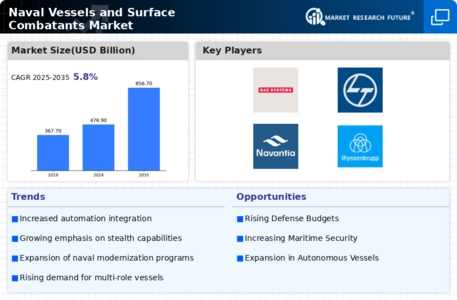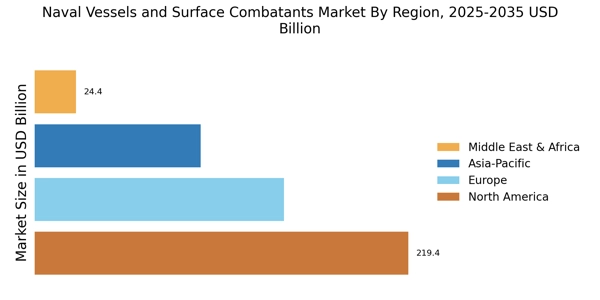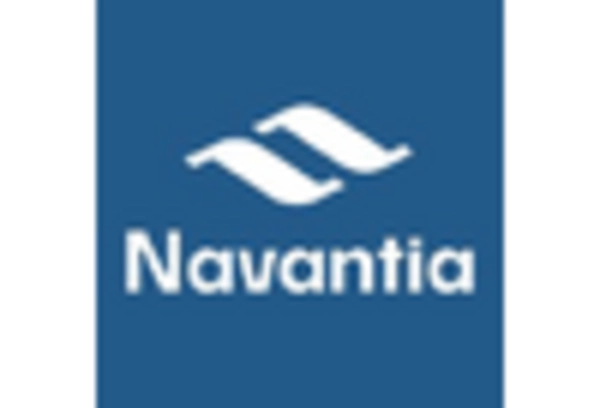Naval Vessels and Surface Combatants Market Summary
As per MRFR analysis, the Naval Vessels and Surface Combatants Market Size was estimated at 487.48 USD Billion in 2024. The Naval Vessels and Surface Combatants industry is projected to grow from 515.77 USD Billion in 2025 to 906.55 USD Billion by 2035, exhibiting a compound annual growth rate (CAGR) of 5.8 during the forecast period 2025 - 2035.
Key Market Trends & Highlights
The Naval Vessels and Surface Combatants Market is poised for robust growth driven by technological advancements and geopolitical dynamics.
- Technological integration is reshaping naval capabilities, enhancing operational efficiency and combat readiness.
- North America remains the largest market, while the Asia-Pacific region is emerging as the fastest-growing area for naval vessels.
- Frigates dominate the market as the largest segment, whereas submarines are witnessing the fastest growth due to increasing strategic needs.
- Key market drivers include rising defense budgets and geopolitical tensions, which are fueling investments in advanced naval systems.
Market Size & Forecast
| 2024 Market Size | 487.48 (USD Billion) |
| 2035 Market Size | 906.55 (USD Billion) |
| CAGR (2025 - 2035) | 5.8% |
Major Players
Lockheed Martin (US), BAE Systems (GB), General Dynamics (US), Thales Group (FR), Northrop Grumman (US), Navantia (ES), DCNS (FR), Huntington Ingalls Industries (US), Fincantieri (IT)


















Leave a Comment